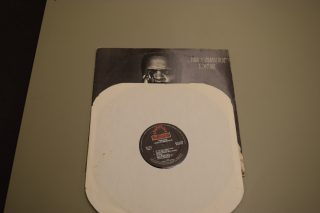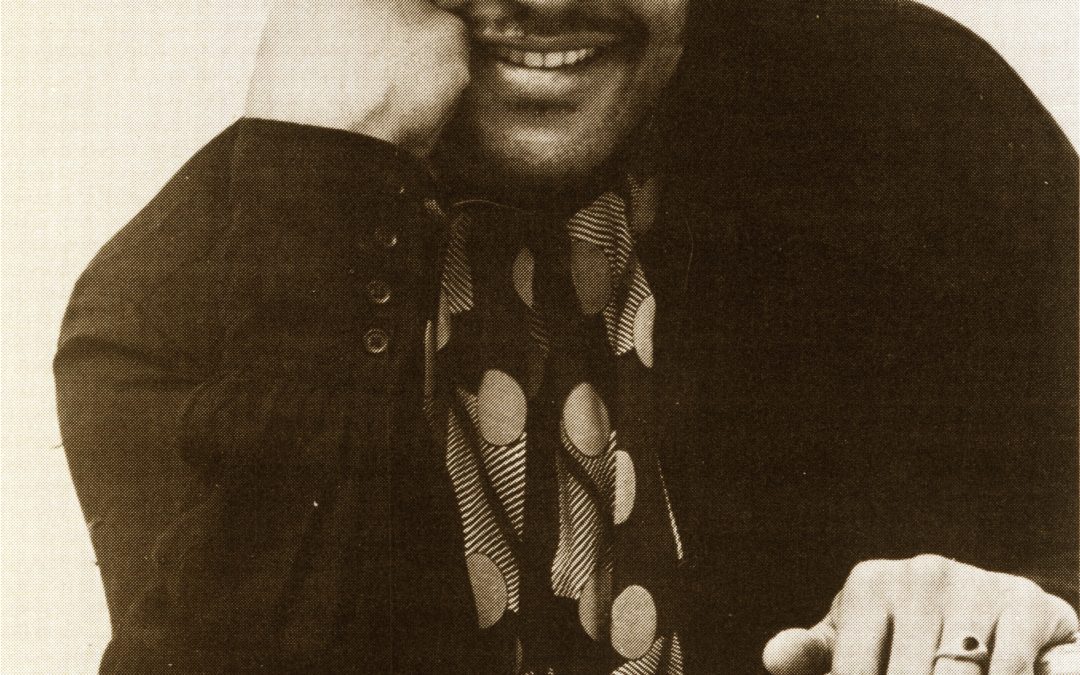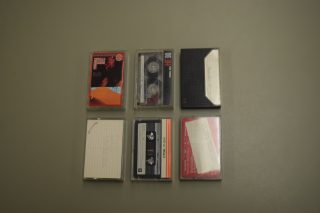Special Collections is pleased to announce that it has formally begun processing the papers of John Stubblefield. John Stubblefield was an African-American jazz saxophonist who originally hailed from Little Rock before moving on to Chicago and then New York. Stubblefield performed with other jazz greats, including Miles Davis and Charles Mingus. Stubblefield’s association with Mingus included an extended stint as leader and conductor of the Mingus Big Band, a group that was assembled to carry on Charles Mingus’ legacy.
As with most archival collections, the processing will entail organizing John Stubblefield’s correspondence and personal papers, but there are a few special aspects about the contents of this collection that will be especially interesting to work with.
One of the first things to consider is the amount of sheet music that can be found in this material, particularly those from what the jazz community calls “Fake Books.” This music, rather than containing entire compositions, contains just the melody lines, the basic chords, and occasionally the lyrics—the minimum items necessary to make an impromptu arrangement of the songs. With the lesser importance given to structured musical notation in jazz, sheet music such as this is necessary for improvisational purposes. These improvisational performances are, by definition, unique and mark one of the chief hallmarks of jazz music.
 Stubblefield was primarily active from the 1970s until his 2005 death. While this means that the collection is, for the most part, free of materials in older audio/visual formats that would be difficult to use with the resources available within the University of Arkansas Libraries, the materials in his papers still are not among the most popular forms for music consumption today. Stubblefield had a large collection of LP vinyl records, including records he performed on, but also those he may have listened to and used as influences. The LP format was a very popular way of distributing and consuming music prior to the invention and popularity of the compact disc. One of the key archival and informational attributes of LP records is not the music they contain but the liner notes that are written on the album covers. Because of the physical size of the record, there is plenty of space to provide not only information about the songs on the album and identify the people performing, but also essays describing the performers, the music, and their inspirations. Another fun thing is that some of the records within Stubblefield’s collection were promotional copies, which tended to be made early in the production run and are considered to have a higher audio quality.
Stubblefield was primarily active from the 1970s until his 2005 death. While this means that the collection is, for the most part, free of materials in older audio/visual formats that would be difficult to use with the resources available within the University of Arkansas Libraries, the materials in his papers still are not among the most popular forms for music consumption today. Stubblefield had a large collection of LP vinyl records, including records he performed on, but also those he may have listened to and used as influences. The LP format was a very popular way of distributing and consuming music prior to the invention and popularity of the compact disc. One of the key archival and informational attributes of LP records is not the music they contain but the liner notes that are written on the album covers. Because of the physical size of the record, there is plenty of space to provide not only information about the songs on the album and identify the people performing, but also essays describing the performers, the music, and their inspirations. Another fun thing is that some of the records within Stubblefield’s collection were promotional copies, which tended to be made early in the production run and are considered to have a higher audio quality.
Stubblefield also left a collection of cassette tapes, which contain a mix of commercial recordings and recordings of individual performances. Cassette tapes were a popular and cheap method for distributing recordings between the early 1970s and the early 2000s, operating alongside both the LP record and the compact disc. Its primary commercial advantages relative to the LP was that it was cheaper to record music on (and reuse, if necessary, because of the magnetic tape that held the recording), and tape players were significantly more portable than LP players. The ease of recording and copying certainly helps explain the performance recordings that are in the collection. These cassettes do not have any promotional images or packaging, but in many cases have written notations stating what performance is on the tape. That lack of commercial wrapping emphasizes the uniqueness of these recordings and their importance to the collection.
With processing of the Stubblefield Papers well underway, we hope that the collection will be available to researchers by the end of 2018.

